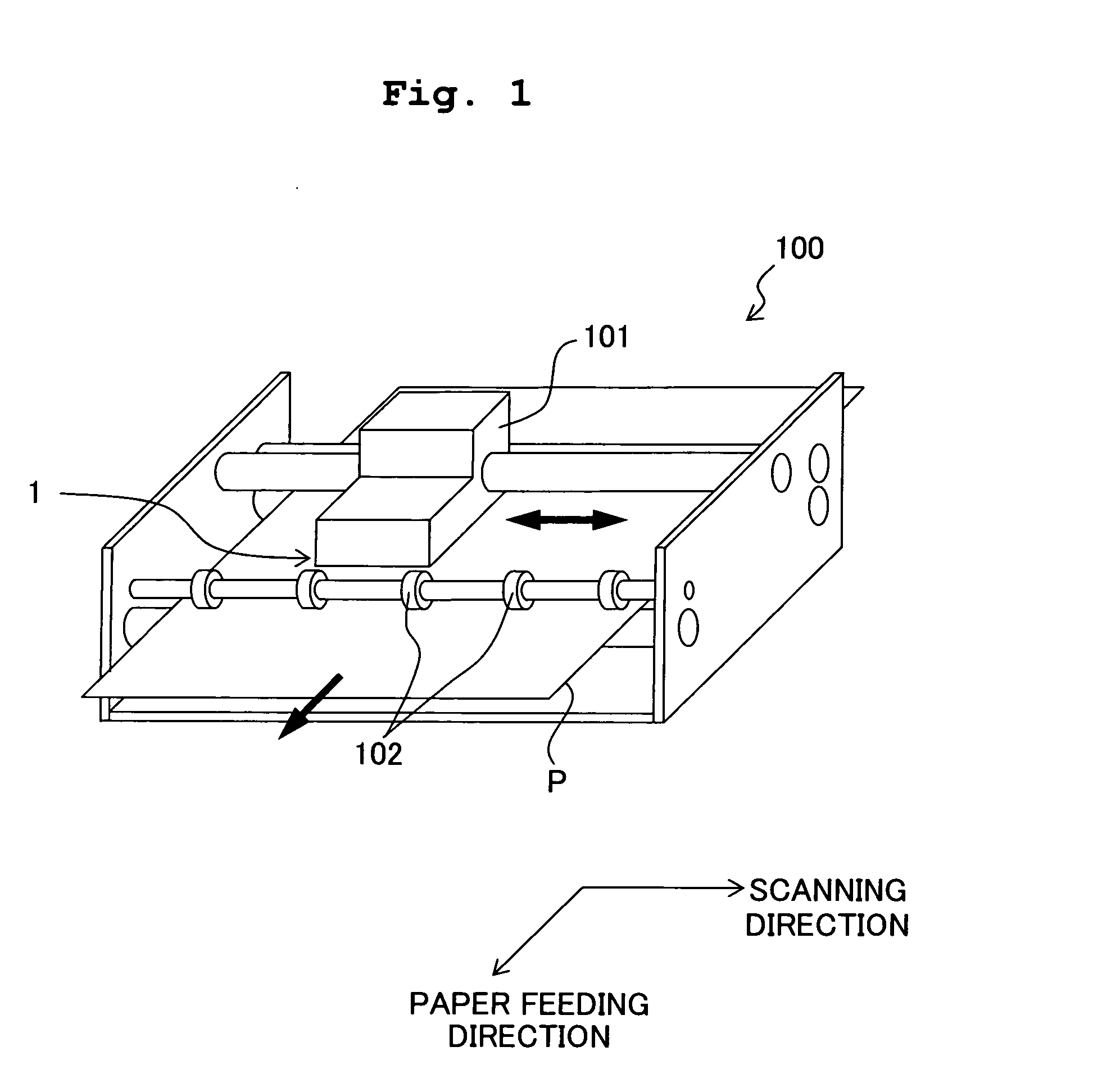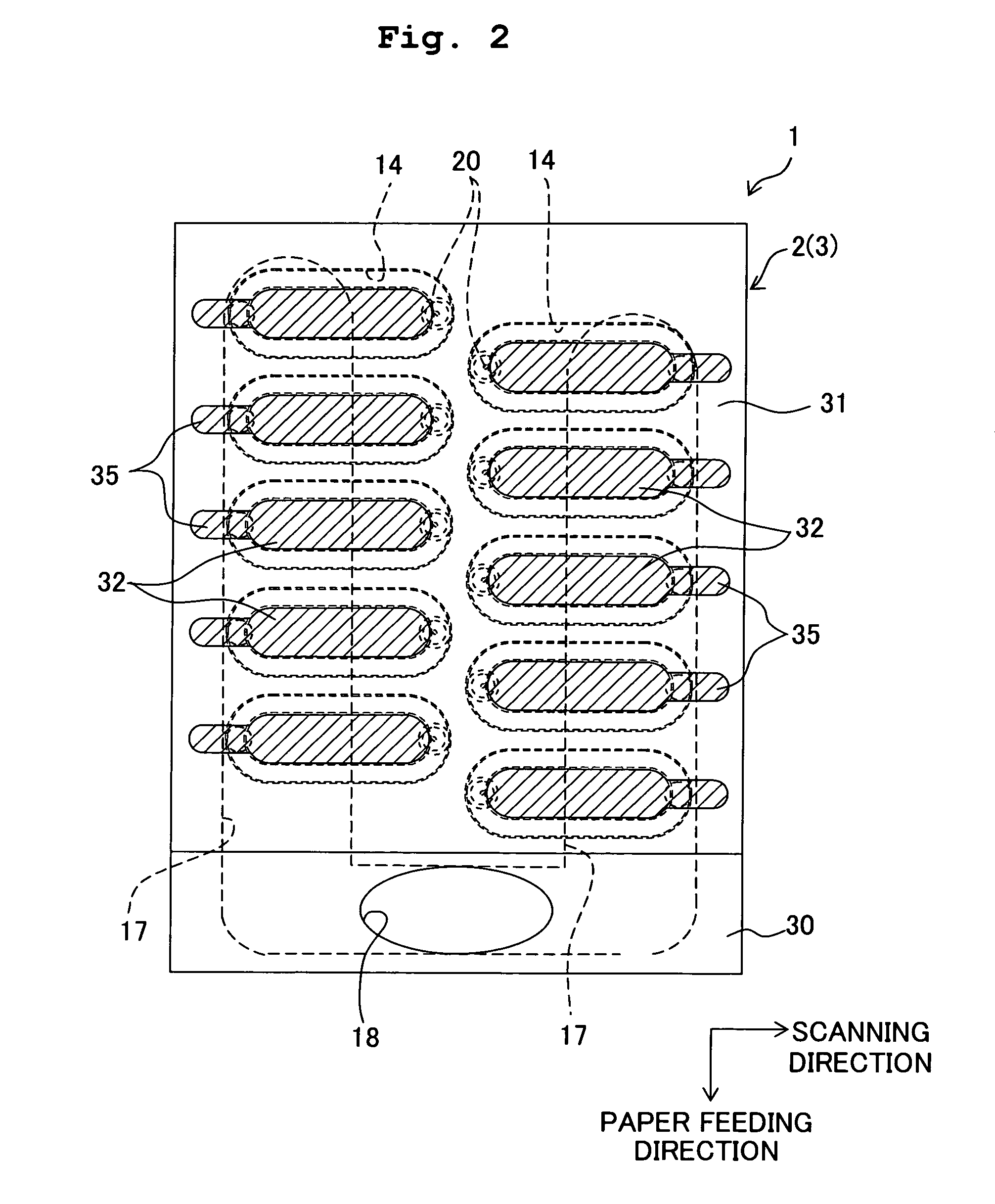Piezoelectric actuator and liquid transporting apparatus
a technology of actuator and liquid, applied in piezoelectric/electrostrictive/magnetostrictive devices, instruments, printing, etc., can solve the problem of reducing the power consumption needed for driving, and achieve the effect of simplifying the manufacturing process, improving the driving efficiency of piezoelectric actuators, and facilitating deformation of vibration plates
- Summary
- Abstract
- Description
- Claims
- Application Information
AI Technical Summary
Benefits of technology
Problems solved by technology
Method used
Image
Examples
first modified embodiment
[0061] It is not necessarily indispensable that a piezoelectric layer be formed on the upper surface of the vibration plate 30 continuously over the plurality of pressure chambers 14. In a first modified embodiment, as shown in FIGS. 6 and 7, a plurality of piezoelectric layers 31A may be formed on the upper surface of the vibration plate 30 at positions each of which overlaps with one of the pressure chambers 14.
second modified embodiment
[0062] In a second modified embodiment, as shown in FIG. 8, a vibration plate 30B may be a clad material formed by laminating two metallic materials (a first metallic material layer 41 and a second metallic material layer 42) which are mutually different from each other. The second metallic material layer 42 is arranged on the channel unit 2 to cover the pressure chambers 14 which are formed through the cavity plate 10. The first metallic material layer 41 is arranged on the surface of the second metallic material layer 42. In the second metallic material layer 42, through holes 42a are formed to have a seamless circular shape. Each of the through holes 42a extends along the edge of one of the pressure chambers 14. The through holes 42a are covered with the first metallic material layer 41 so as to form grooves 40B respectively.
[0063] It is possible to form grooves 40B in the vibration plate 30B by forming the through holes 42a through the second metallic material layer 42 by subje...
third modified embodiment
[0065] It is not necessarily indispensable that the vibration plate 30 should serve as the common electrode as is the case with the first embodiment. In a third modified embodiment, as shown in FIG. 9, a common electrode 34 may be provided separately from the vibration plate 30. When the vibration plate 30 is a metallic plate, however, the upper surface of the vibration plate 30 needs to be electrically insulative, for example, by forming an insulation material layer on the upper surface of the vibration plate 30 on which the common electrode 34 is to be formed. When the vibration plate 30 is made of silicon material, the upper surface of the vibration plate 30 may be electrically insulative by being oxidized. When the vibration plate 30 is made of an insulation material such as ceramic material or synthetic resin, the common electrode 34 is formed directly on the upper surface of the vibration plate 30.
PUM
 Login to View More
Login to View More Abstract
Description
Claims
Application Information
 Login to View More
Login to View More - R&D
- Intellectual Property
- Life Sciences
- Materials
- Tech Scout
- Unparalleled Data Quality
- Higher Quality Content
- 60% Fewer Hallucinations
Browse by: Latest US Patents, China's latest patents, Technical Efficacy Thesaurus, Application Domain, Technology Topic, Popular Technical Reports.
© 2025 PatSnap. All rights reserved.Legal|Privacy policy|Modern Slavery Act Transparency Statement|Sitemap|About US| Contact US: help@patsnap.com



